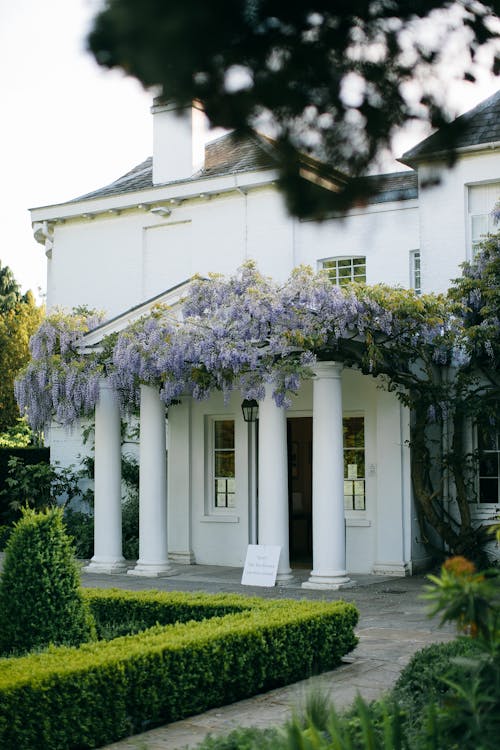Historic (or Century) homes exude charm and character, but they also require diligent care and maintenance to preserve their unique features and structural integrity. When considering the purchase of a historic home, it's essential to assess whether it has been well maintained over the years. Last week, we talked about small signs a historic home might have some big problems. This time let's focus on the green flags!
Hardwood Flooring in Good Condition
Many historic homes feature hardwood flooring, and their condition can reveal a lot about maintenance. Look for well-maintained hardwood floors that are free from major scratches, water damage, or signs of neglect. A well-preserved floor adds to the home's aesthetic appeal.
Plaster Walls
A great reason to buy an older home is the quality materials and craftsmanship. New homes use drywall because it is faster and cheaper, but not necessarily better. Plaster walls are stronger, more resistant to fire, and provide sound proofing! Well-maintained historic homes often feature plaster walls that have been carefully preserved. Inspect the walls for any cracks, peeling, or water stains. If you find walls that are smooth, well preserved plaster, take that as a sign of proper care.
Updated Electrical
One of the most critical aspects of maintaining a historic home is ensuring its electrical systems are up to date. Outdated electrical systems can be hazardous and may need costly upgrades. A well-maintained historic home should have updated wiring, modern outlets, and a circuit breaker panel. Don’t be afraid to ask for information about recent upgrades to the electrical! New electrical work is good for the longevity of your home.
Clean HVAC Filters
Homeowners often repaint or spruce up their home in preparation for selling, so it can sometimes be tricky to know the true condition. However, you can spot an attentive homeowner by the condition of their filters. Check the HVAC (Heating, Ventilation, and Air Conditioning) system's filters. Well-maintained homes will have clean filters, which are essential for efficient heating and cooling. These small details can be a sign that the home is over-all well cared for.
Crown Molding and Baseboards
Crown molding and baseboards are classic features of historic homes. They add a unique character that is deserving of special care. Inspect them for signs of wear, damage, or paint deterioration. Well-maintained crown molding and baseboards should be in good condition and free from major defects.
Owning a historic home can be a rewarding experience, but it comes with a responsibility to preserve its character and structural integrity. These factors provide valuable insights into the home's overall maintenance history and can help you make an informed decision about its suitability for your needs.
If owning a Historic or Century home is something you’re interested in looking into, give me a call.
If you already own a Historic or Century home and would like to find out what it is worth at this time, please call me at 905-683-7800. Ask for me, Brian Kondo.
Thanks For Reading Today’s BLOG!
Brian Kondo
Sales Representative / Team Leader
The Brian Kondo Real Estate Team
Re/Max Hallmark First Group Realty Ltd.
905-683-7800 office
905-426-7484 direct
brian@briankondo.com
www.BrianKondo.com
www.BrianKondoTeam.com
Homesellers - Find Out What Homes in Your Neighbourhood are Selling For! You can receive a FREE computerized printout of ALL recent Home Sales and Current Listings in your neighbourhood. Click here!
Best Buy Hotlist - You can receive a FREE list of the 10 Best Buys in your
specific price range sent to you at No COST or OBLIGATION.
Click here!
Your Home Sold Guaranteed or I'll Buy It!* No Gimmicks! For a Free Special Report that Details my Guaranteed Sale Program, visit: www.BriansGuaranteedSaleProgram.com.
Remember, your referrals change lives! We donate a portion of our income on every home sale to a great worthy cause like SickKids Hospital. To find out more visit: www.ReferForSickKids.com.
If you or anyone you know is considering making a move in the next little while, give me a call or pass on my number ... 905-683-7800 (Office) or 905-426-7484 (Direct).
#AdvantagesOfCenturyHome #BuyingCenturyHome #OldHome #ClassicHome #HistoricHomes #HistoricalHome #WarHome #OldHome #CenturyHome #CenturyOldHome #VictorianHome #GothicHome #architecturephotography #englishhistory #historicbritain #britishhistory



